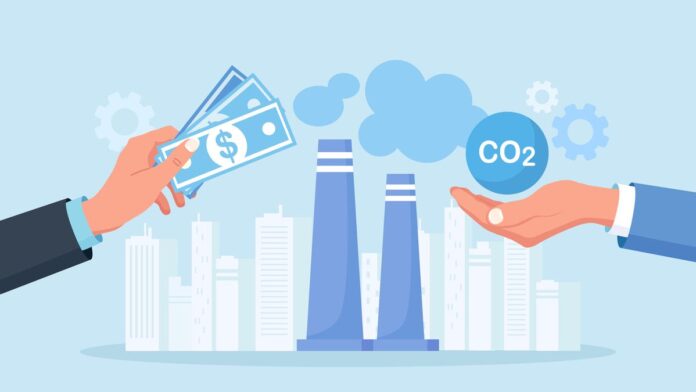
For representative purposes.
| Photo Credit: iStockphoto
The story so far: COP29, the ongoing climate conference in Azerbaijan’s capital Baku, has given a fillip to the idea of using carbon markets to curb carbon emissions by approving standards that can help in the setting up of an international carbon market as soon as the coming year.
Also read: A guide to COP29 climate jargon
What is a carbon market?
A carbon market is a market that allows the buying and selling of the right to emit carbon into the atmosphere. Suppose a government wants to limit the amount of carbon emitted into the atmosphere. It can issue certificates called carbon credits that allow the holder of the certificate to emit a certain amount of carbon into the atmosphere. One carbon credit is equivalent to 1,000 kilograms of carbon dioxide. By limiting the number of carbon credits that are issued, governments can control how much carbon is released into the environment. It should be noted that anyone who doesn’t hold carbon credits to their name would not be allowed to emit any carbon into the atmosphere. Carbon credits were first used in the 1990s in the U.S., which introduced the cap-and-trade model to control the emission of sulphur dioxide.
Individuals and firms that hold carbon credits but don’t actually need them for any reason can sell their credits to interested buyers. The price at which these carbon credits are traded is determined by market forces, which in this case are the supply of carbon credits and the demand for these certificates. A carbon market can also include the trading of carbon offsets. In this case, a business that pollutes the environment for example, can purchase carbon offsets sold by an environmental NGO that promises to plant trees that suck a certain amount of carbon emissions out of the atmosphere for each offset that it sells.
What is good about carbon markets?
Pollution of the environment and climate change caused by carbon emissions is a classic case of what economists call an externality. An externality is caused when the cost of an economic activity is not properly accounted for (or internalised) by the market price system due to the absence of well-defined property rights. For example, a business that uses raw materials such as iron will have to pay the supplier who owns the iron to be able to procure and use it, thus incurring a certain cost. But when the same firm emits carbon into the atmosphere, it doesn’t usually have to pay any money to anyone. In other words, firms are generally able to emit their waste into the atmosphere for free. This of course leads to unhindered pollution of the atmosphere as firms in this case have no financial incentive to curb their carbon emissions. Carbon markets in which the right to pollute is traded for a price can solve the problem by imposing a certain cost on firms for polluting the atmosphere, helping to curb emissions in the process.
Also read: Takeaways from COP29
The intersection of standardised accounting frameworks and technological advancements has improved the ability of corporations to monitor and report their carbon emissions. While, this is difficult for the vast majority of small businesses in the developing world, particularly in accurately capturing supply chain emissions, ongoing developments, like real-time data tracking of the energy sector, continue to enhance the granularity and reliability of corporate carbon accounting. However, corporations have preferred a voluntary reporting system, like the Carbon Disclosure Project. They have been loathe to government interventions limiting carbon emissions, arguing that such budgeting may lead to output restrictions or rise in costs. They also point to varied production processes, some that might have diverse supply chains that might make it difficult to find the optimal carbon budget for their facilities. Large multinational corporations such as ExxonMobil and General Motors have advocated for carbon markets that allows free trading of carbon credits among firms at a price determined by market forces, that would allow these firms to purchase carbon credits from other firms, which don’t need them as much. This they say, helps allocate carbon credits more efficiently than government diktat.
What can go wrong?
Even when there is a functioning carbon market, a government that is not very keen on reducing emissions may increase the supply of carbon credits and drive down the price of the right to pollute, leading to no noticeable drop in emissions. Others may keep a strict cap on the supply of carbon credits but allow firms to cheat by allowing them to illegally emit carbon. The success of carbon offsets also depends on the degree of personal incentive that firm owners possess to care about carbon emissions, which may often be very little. Critics claim that firms that purchase carbon offsets often do it for the sake of virtue signalling and may have little incentive to ensure that their investments in these instruments are actually helping offset carbon emissions. Meanwhile, other critics have raised more fundamental questions regarding how exactly a government would be able to arrive at the optimum supply of carbon credits. They argue that politicians, who do not incur any personal economic cost when they legislate emission reductions, may restrict the supply of carbon credits more than what is really necessary, leading to slower economic growth.
Published – December 16, 2024 08:30 am IST
